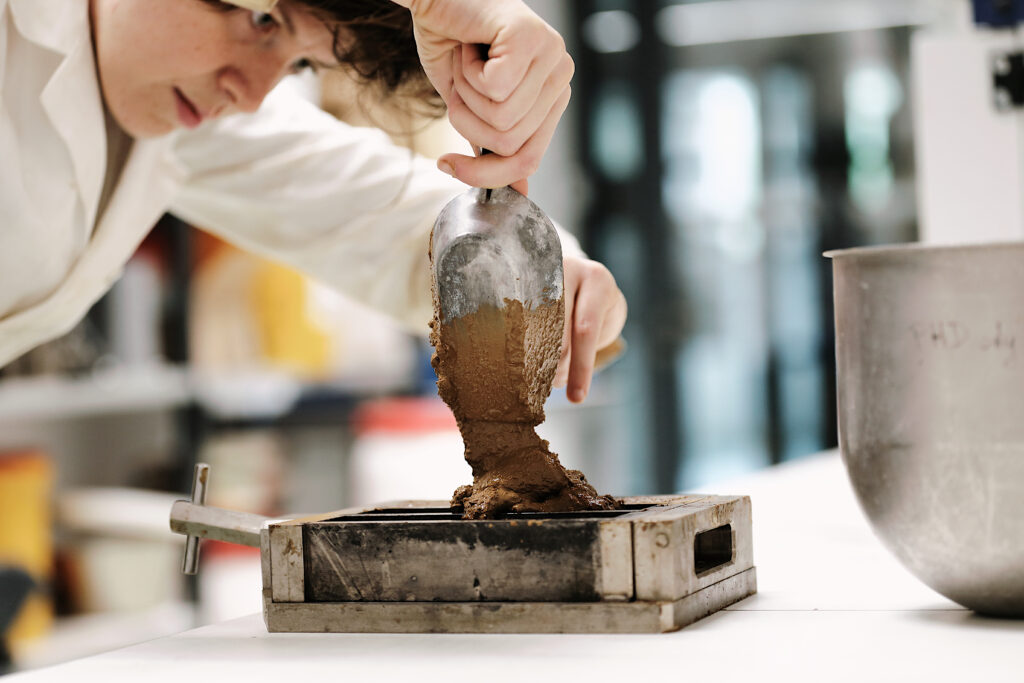Poured Earth
A sustainable, locally produced building material!
Daria Ardant from Guillaume Habert’s group prepares a sample of poured earth. This material is produced from cheap excavation material and additives. It creates a CO2 neutral concrete that can be used as a construction material.
Daria Ardant from Guillaume Habert’s group prepares a sample of poured earth. This material is produced from cheap excavation material and additives. It creates a CO2 neutral concrete that can be used as a construction material.
Let’s start with a fun fact: How much time do you think people in industrialized countries spend inside buildings? It’s staggering: We spend 90% of our life time in built environments! Given its centrality, it’s hardly surprising that the building sector is responsible for 37% of global GHG emissions, according to the UN environment programme 2022.
Concrete production is one of the central issues. Or if you look more closely, it’s a certain ingredient of this building material that is the problem: Cement only makes up roughly 12% of the mix, but causes 98% of the emissions. For every tonne of cement of produced, 0.6t of CO2eq are emitted into the air. Curious why? Head over to our page on industry and keep the keyword heat in mind!
Concrete was, of course, not always the building material No. 1 on this planet. Much rather, earthen materials long dominated traditional building across the world. So what can we do? The Building Impact Zero Network has phrased this questions well: If rammed earth (humid earth compacted into a formwork) has been substituted by cement concrete (liquid cement mortar poured into a formwork) in order to save time, couldn’t we pour liquid earth into a formwork keeping the benefits of cement concrete (quick execution) without its disadvantages (high environmental impact)?
The answer is yes and Professor Guillaume Habert’s group at ETH is one place where you can see this becoming a reality: His team specializes in the low carbon, clay-based concrete called poured earth. In particular, they are developing a new type of poured earth with improved water resistance based on natural tannins. Combined with superplasticizers, this material can simply be poured directly into a mould where it solidifies. This easy and fast usage makes it plausible for usage in today’s construction sector.
Want to find out more? ETH has established entire master’s programs to help students embark on careers at these intersections of building and sustainability. For example, the CAS ETH in Regenerative Materials will let you get your hands dirty with much more than just poured earth. And the Master in Integrated Building Systems lets you take deep dive into the future intersection of architecture and sustainable engineering as a whole!


